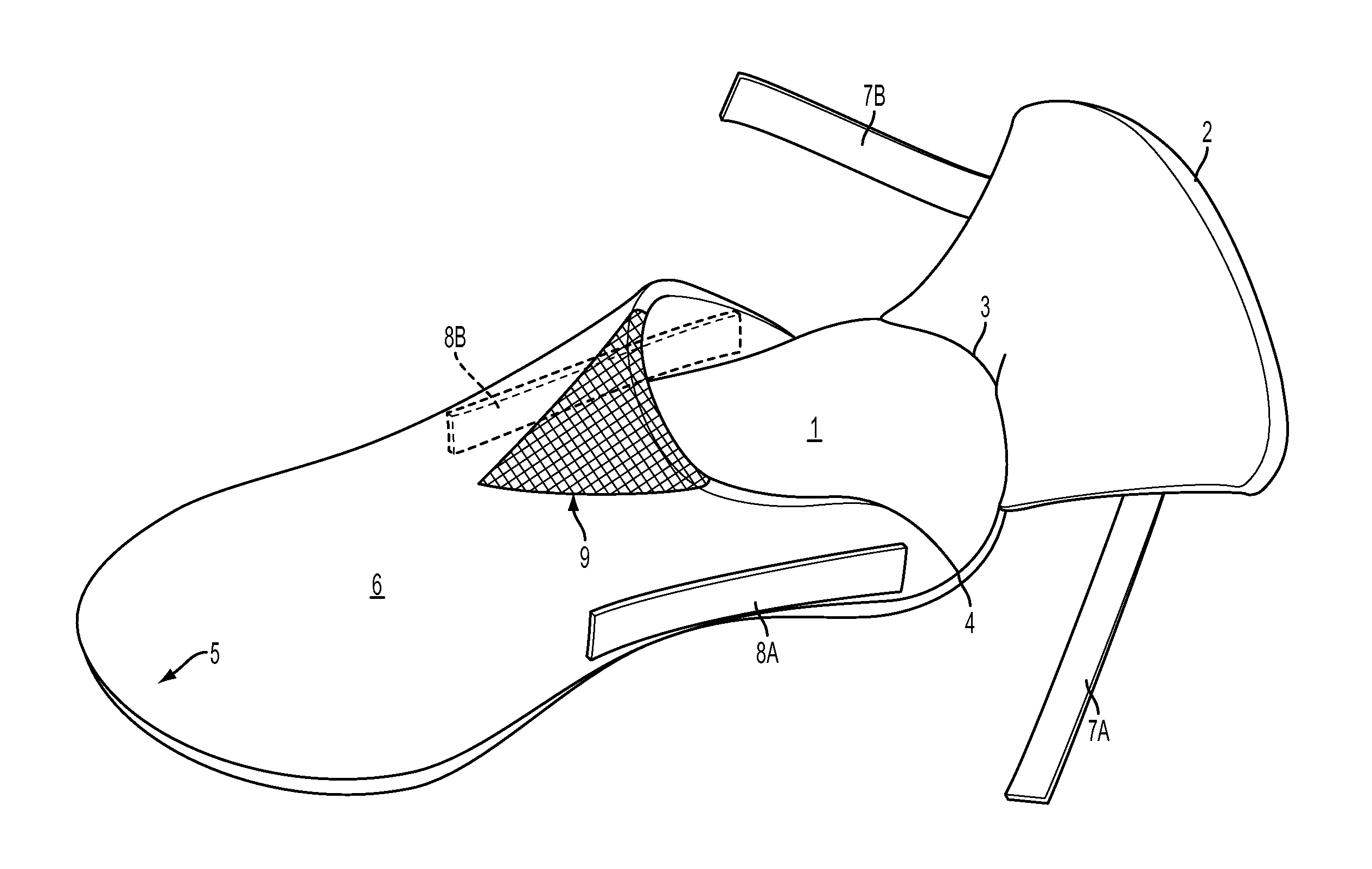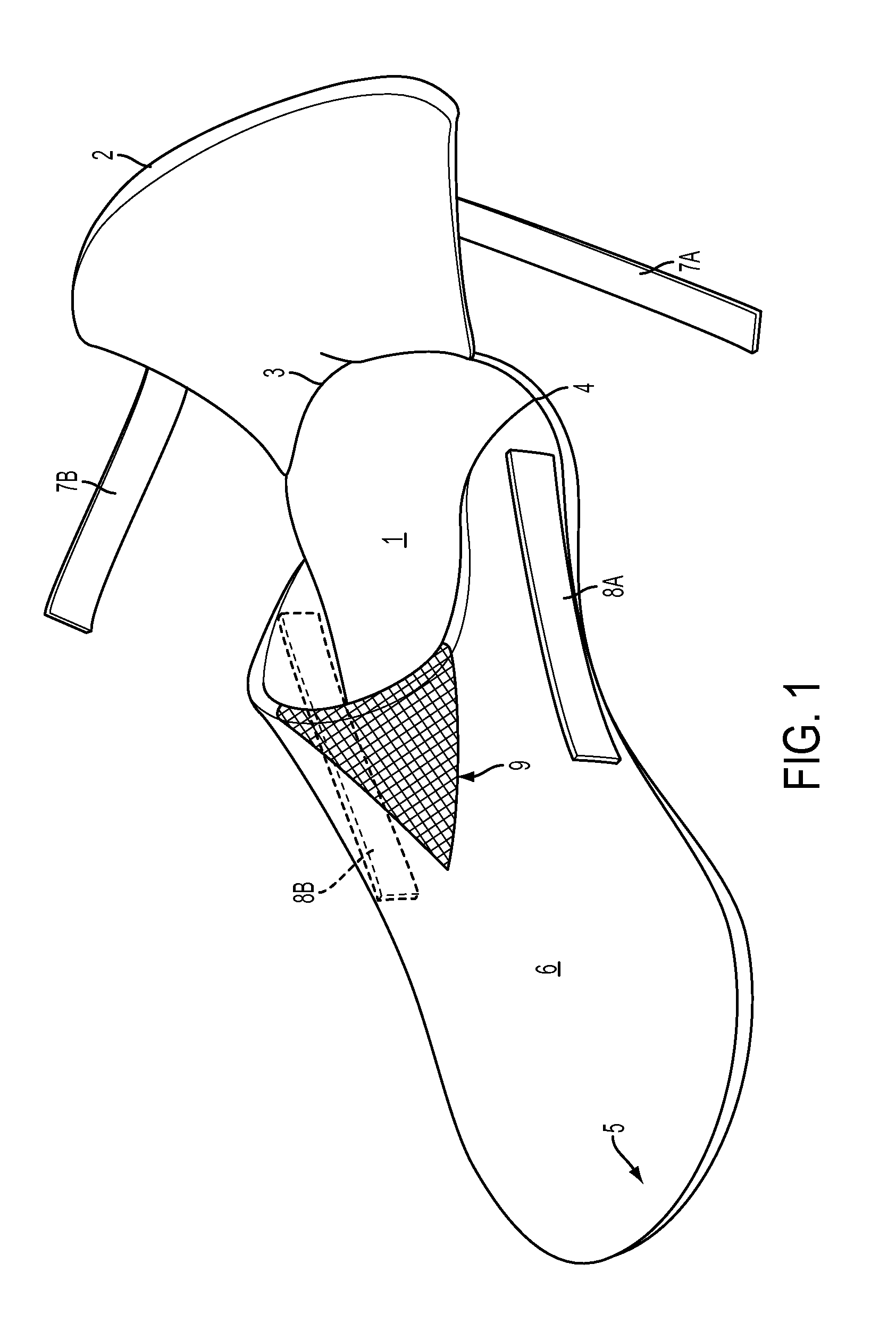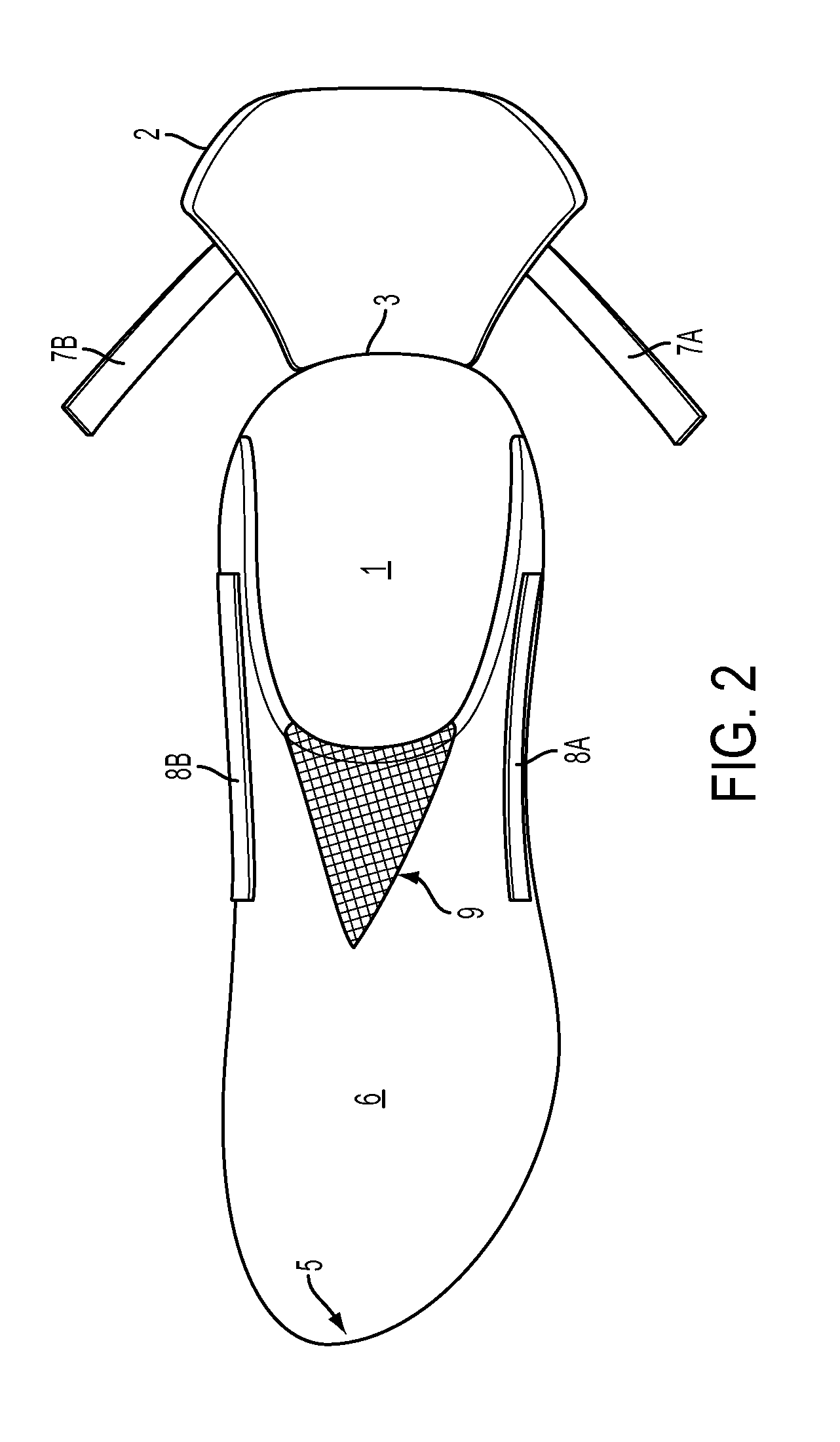Fast transition running shoe
a fast transition and running shoe technology, applied in the direction of fastenings, uppers, bootlegs, etc., can solve the problem of obviating the factor
- Summary
- Abstract
- Description
- Claims
- Application Information
AI Technical Summary
Benefits of technology
Problems solved by technology
Method used
Image
Examples
first embodiment
[0047]Turning to another embodiment, FIG. 6 shows spring biased wires 9A and 9B inserted and secured inside Velcro-like straps 7A and 7B respectively to stiffen and bend the straps outwardly and further away from the Velcro-like target patches 8A and 8B which they will eventually be moved to make contact with. The addition of the spring biased wires or equivalent provides additional assurance that the Velcro-like straps will not accidentally touch the wrong location spot on the nearby Velcro-like target patches. This embodiment prevents closure at an undesired location spot. While the running shoes of the first embodiment as described above in FIGS. 1 to 5 does not require the addition of these spring biased wires or similar additional support in the Velcro-like straps, the addition thereof adds further confidence and insurance against premature, accidental sticking before full closure. In short, this embodiment provides the athlete with assurance that the Velcro-like straps will no...
third embodiment
[0052]the running shoe of the disclosure is shown in FIG. 9. Here the strap and spring embodiments shown in FIGS. 1 to 6 are replaced with a modified heel or heel counter portion as will now be described. Referring to FIG. 9, the heel or heel counter portion 21 is a retractable flap, which for illustrative purposes only, is 6 to 8 inches wide horizontally (depending on the shoe size), and 2.5 to 3.5 inches in height, vertically. The heel counter portion 21 includes flaps 22B and 23B extending outwardly from the sides of the heel counter portion 21. As detailed below, the flaps 22B and 23B have a fastening material disposed on the inner surfaces thereof and can be secured to corresponding fastening material disposed on an outer surface of the rear portion of the shoe so as to secure the heel counter portion 21 in the closed position. In the given embodiment, the heel center portion 21 and the flaps 22B and 23B are formed as one integral member. As shown in FIG. 9, the heel counter po...
fourth embodiment
[0054]the running shoe of the disclosure is shown in FIG. 10 where a one strap design is employed instead of the two strap design shown in FIGS. 1 to 6. The single flap allows the opening and secure closure of the middle portion of the heel counter portion in a faster and more efficient way than requiring two straps on each shoe as disclosed in FIGS. 1 to 6. In this embodiment, the heel is cut from the center top to the midsole area at its bottom approximately 1 inch on both sides, resulting in a 2 inch opening, The single flap (or strap) portion 24A of the heel counter portion is coated or formed with a hook / hole or equivalent material such as Velcro or a Velcro-like material, or any other suitable fastening material, and is set in the open position. The surface of the shoe is also coated or formed with a similar hook / hole or equivalent material such as Velcro or a Velcro-like material. For illustrative purposes only, the runner's left foot shoe is shown and the flap 24A is to be c...
PUM
 Login to View More
Login to View More Abstract
Description
Claims
Application Information
 Login to View More
Login to View More - R&D
- Intellectual Property
- Life Sciences
- Materials
- Tech Scout
- Unparalleled Data Quality
- Higher Quality Content
- 60% Fewer Hallucinations
Browse by: Latest US Patents, China's latest patents, Technical Efficacy Thesaurus, Application Domain, Technology Topic, Popular Technical Reports.
© 2025 PatSnap. All rights reserved.Legal|Privacy policy|Modern Slavery Act Transparency Statement|Sitemap|About US| Contact US: help@patsnap.com



